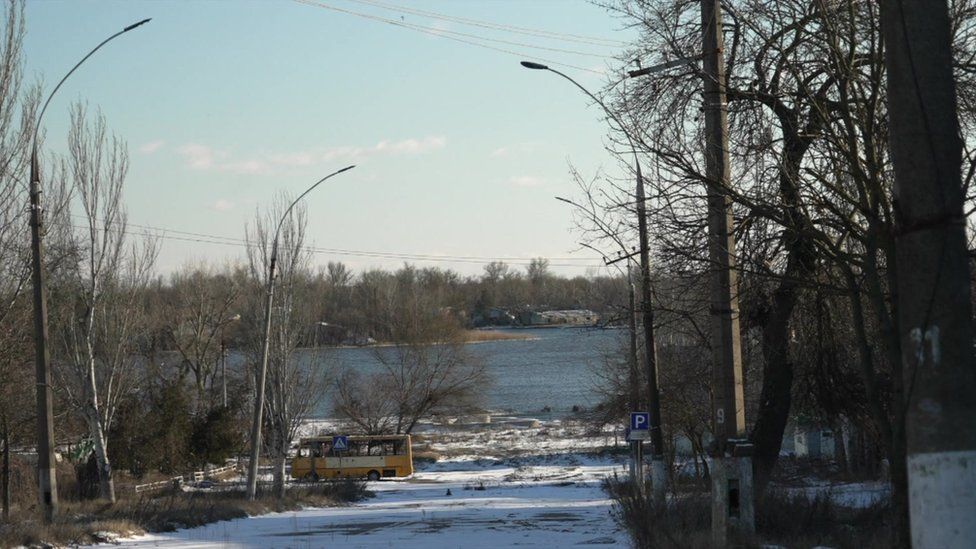
By James Waterhouse
Ukraine correspondent in Kherson
The western bank of the Dnipro river in the city of Kherson is one of them.
You can’t see the Russian troops on the other low, marshy riverbank, but you know they’re there.
Incoming artillery fire as we arrive at an abandoned building serves as a sharp reminder.
There is nothing new about shelling in war. But the unit we’re meeting deals with one of the key innovations of this invasion: drones.
As we hug the side of the building and take cover in the stairwell, we’re led inside from the freezing winter winds to the warmth of a militarised living room.
The smell of a strawberry vape hangs above these Ukrainian soldiers, sitting on armchairs with looks of quiet focus and cans of Monster energy drink. You imagine the floral wallpaper wasn’t their choice.
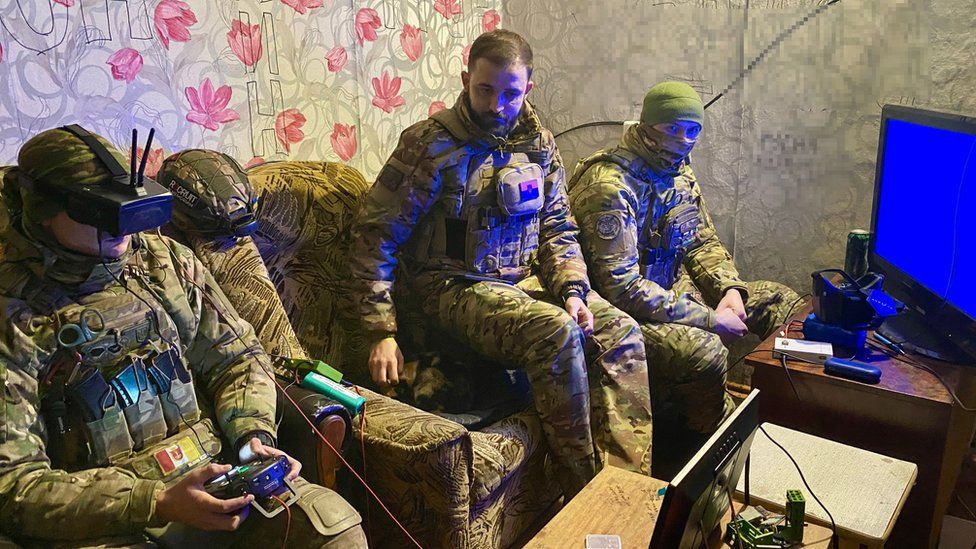
Artem, a 20-year-old pilot, suddenly sits up. They’re told the Russians have launched drones from across the water.
“It’s from a location known to us,” explains Tymur, commander of the Samosud squad in Ukraine’s 11th National Guard Brigade.
“Our goal is to destroy the pilots. We have the coordinates, so we’re flying there right now.”
There are at least a dozen drones on the floor – all loaded with grenades. A cat, the unit’s unofficial mascot, nuzzles against one of the propellers.
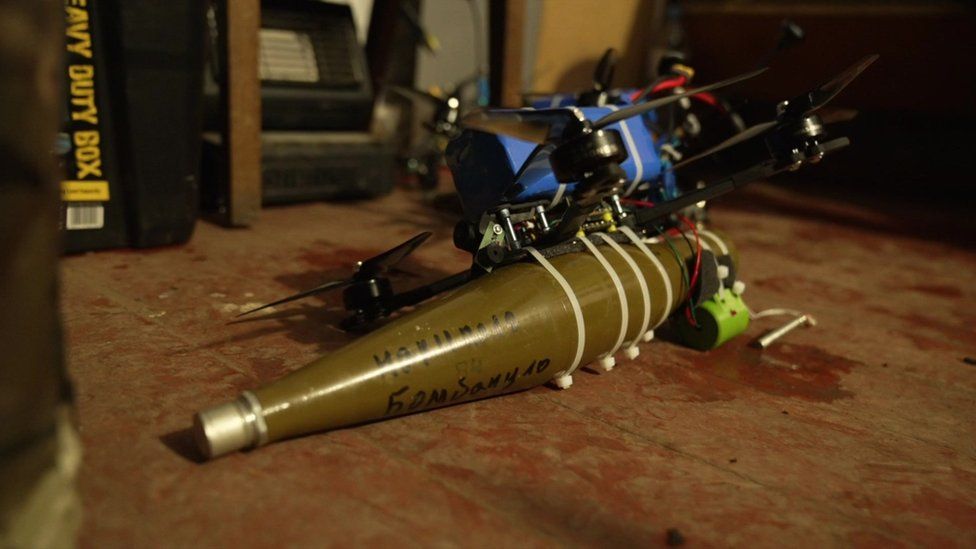
One drone is taken outside as Artem puts on his VR headset.
We watch on the TV as he flies it across the river into occupied territory. From this vantage point, there are no obvious signs of life.
A few kilometres later, Artem’s drone arrives at an industrial area. It passes a warehouse before hovering next to a block of flats.
He eventually spots an antenna next to a window in the stairwell, and flies straight into it. The screen turns blue. Artem exhales and removes his headset.
“When we first did this it was emotional,” says Artem. “Now this is business as usual.”
“I didn’t get enough time to play computer games before [the full-scale invasion]. Now I’m catching up!”
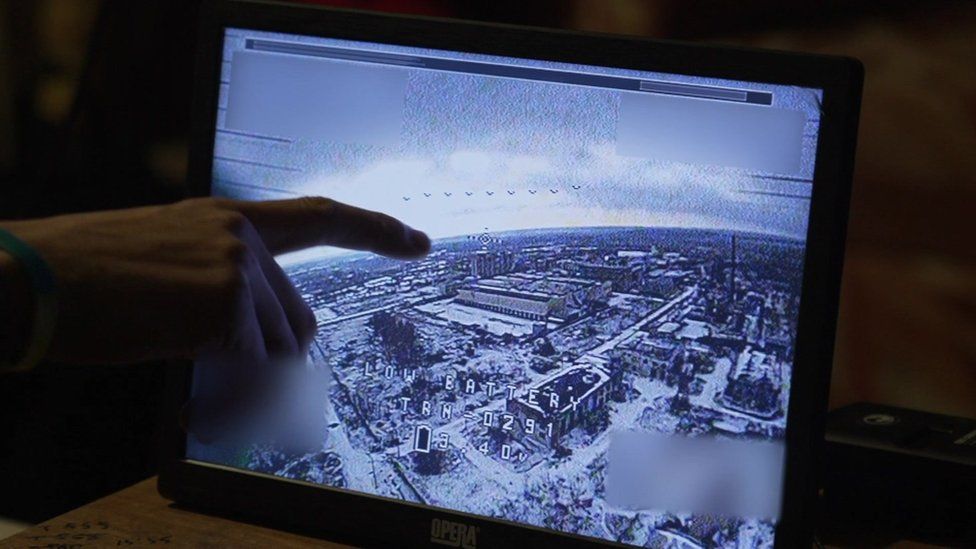
They launch another drone but the screen turns blue as soon as it crosses the river. The Russians have turned on their jamming system.
A third then makes the same journey. This time it makes it through, and Artem returns to the block of flats.
He’s able to confirm the antenna was destroyed. With 10 minutes of battery life left, he flies off to see what else he can detect, or destroy.
His unit has been targeting a main road which the Russians use to deliver supplies. Civilians are banned from driving there, so the Ukrainian drone pilots hit anything with wheels.
Artem spots a Russian checkpoint and flies towards it. Unfortunately for him, they use a jamming gun and the screen turns blue as he gets close. He exhales again.
“No matter how many times we hit the same places, [the Russians] are constantly replenished,” says Tymur. “They’re kind of fearless.”
With each drone costing around $500 (£396), it’s a constant cycle of launch, seek and destroy.
The returns however can be significant. Tymur says his team once destroyed an S-350 air defence missile system worth $136m.
BBC
No matter how many times we hit the same places, [the Russians] are constantly replenished. They’re kind of fearless.Tymur
Drone squad commander
Drones mean the Russians can’t hide anywhere within 10km (six miles) of the front line.
But, crucially, the invaders are doing exactly the same to the Ukrainians.
Under constant drone surveillance and enemy bombardment, life has gradually drained from Kherson’s streets. Aside from a limited crossing further up the Dnipro near the town of Krynky, Ukrainian attacks here are only probing, and require patience.
READ: Outnumbered and outgunned by Russians in brutal riverside battle
In a snow-covered park in Kherson, we meet a mobile air-defence team under an archway. We’re told to move in small groups because of watching Russian drones.
As we stride forward in our body armour, dog-walkers turn away from us with a slight look of confusion.
“My call sign is King,” says the deputy commander of the 124th Territorial Defence Brigade, with a fist bump. They’re gathered around a UK-registered truck with a .50 calibre machine gun mounted on the back.
“We work 24/7,” he says. “We destroy all kinds of drones, mainly Iranian-made Shaheds.”
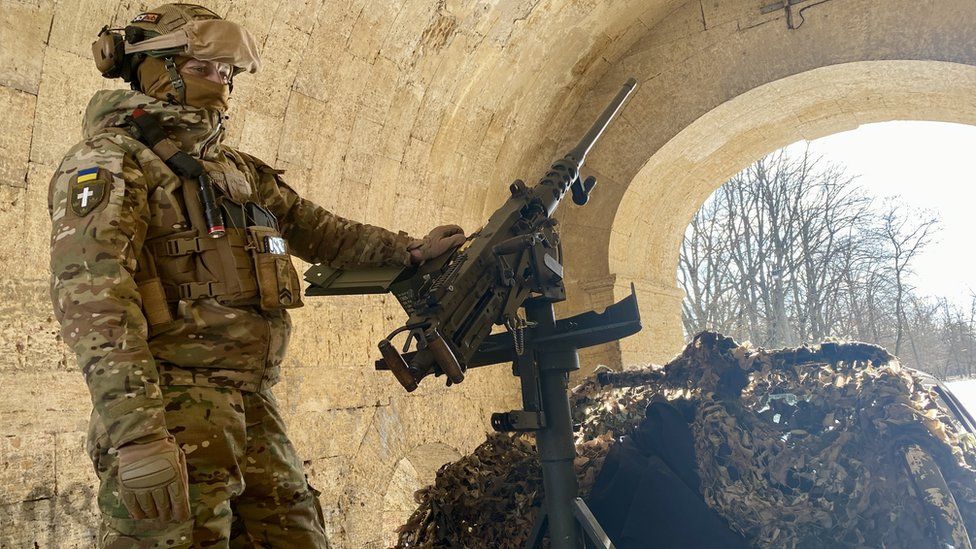
“Russia’s factories are on a military footing. They are constantly increasing their power. At this point, it’s relentless.”
So does King think Ukrainian forces could cross the river in large numbers this year?
“It’s hard to think about,” he replies. “We’re just doing our jobs to make sure it happens as soon as possible.”
With major military packages trapped under political disagreements in the US and European Union, Ukraine is having to adapt, and look inwards.
A new £2.5bn military aid package from the UK has been welcomed here, with £200m of that earmarked specifically for drones. But President Volodymyr Zelensky has also pledged to make a million of them within the borders of Ukraine.
On the outskirts of Kherson in an icy field, pilots practise drone flights with plastic bottles tied beneath them, in place of grenades.
It takes just 14 hours of training to qualify as a drone pilot. Ukraine’s government is encouraging people to take part in free training, as well as to manufacture drones at home to send to the front.
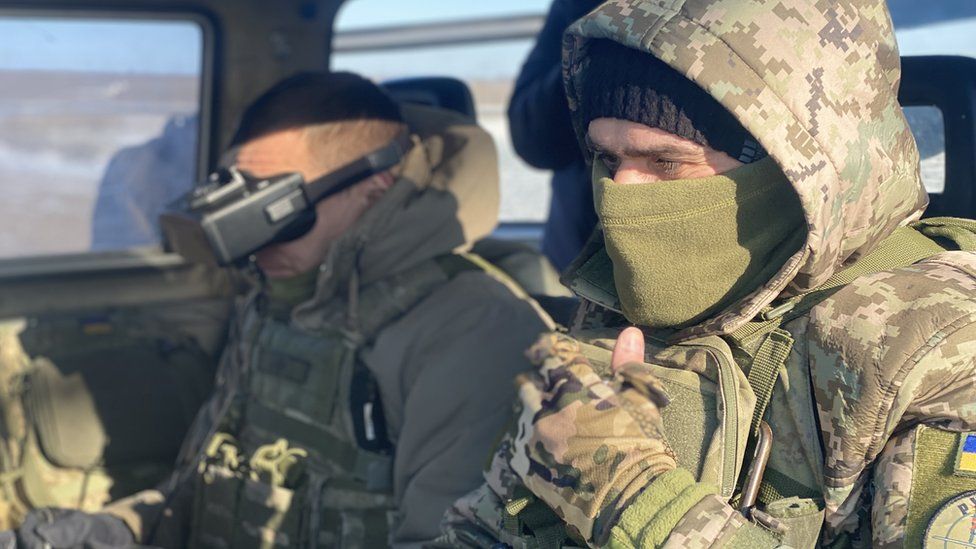
Through his balaclava, Stitch explains their importance in this war of attrition.
“We are engaged in a struggle of technologies, an arms race: who will be the first to invent what, who will assemble something cool,” the drone commander says.
It’s widely accepted that several innovations now need to happen at once for the front lines to change significantly.
Ukraine’s commander-in-chief Gen Valerii Zaluzhnyy told the Economist magazine in November that Russia and Ukraine had “reached the level of technology that puts us into a stalemate”.
The problem for Ukraine has never been what has been supplied by allies, but when.
“During the First World War, aviation was born,” says Stitch. “Now we are starting the future war of drones, which maybe in two decades will turn the tide of any war.”https://tehopeng.com/